Best AI Art Prompt Ideas to Ignite Creativity
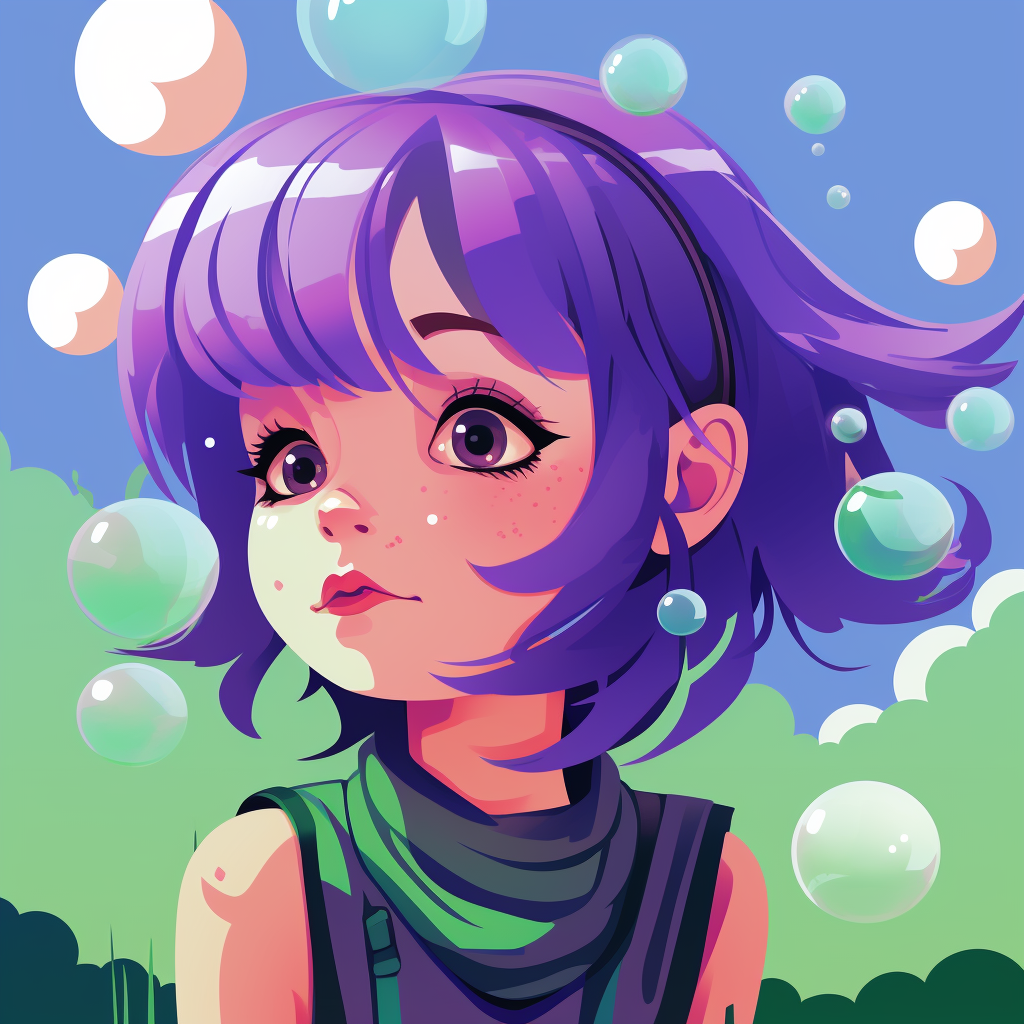
The core principle of AI art creation is simple: the more precise the input, the more stunning the output! In the world of artificial intelligence, the term "input" refers to prompts, while "output" pertains to the resulting generated artwork. Nowadays, both professional artists and hobbyist designers are harnessing AI art prompts to create visually striking masterpieces. This emerging form of artistic expression is continuously reshaping our creative approaches, attracting more and more individuals to join this artistic revolution.
Have you ever felt that crafting AI art prompts is akin to casting a spell? When all attempts seem to end in failure, how are those creative masters using tools like Midjourney and DALL-E to produce breathtaking visual effects? The truth is, with the right techniques, you can easily craft high-quality AI artworks.
What Are AI Art Prompts?
AI art prompts are directives inputted into AI-driven art generators to spark their creativity and generate various artworks and images. Imagine providing guidance to an artist, while this artist is, in fact, a sophisticated computer program. Effective AI art prompts should be clear, specific, detailed, and imaginative.
Why Are Excellent AI Prompts Crucial?
To create commendable images, AI content generators rely entirely on their understanding of these prompts. They compare the prompt's content with the data in their training library. Thus, the quality of prompts is paramount in this process. There is no fixed formula for crafting effective prompts; it may require multiple experiments for the model to generate an image that perfectly matches your expectations. The iterative process not only provides more inspiration but also helps you understand how different elements of prompts impact the generated art.
How Do AI Art Generators Work?
Before delving into AI art prompt techniques, it's essential to understand how these generators operate. Remember, generative AI applications are essentially machines, fundamentally different from human cognition. These programs do not grasp the essence of the world; they work based on the features and patterns in the training data. Therefore, vague prompts like "beautiful face" often yield poor results, while more specific descriptions, such as "symmetrical, plump-lipped, green-eyed character," tend to be more effective. To achieve ideal results from an AI art generator, you need to provide clear and detailed descriptions. Effective AI art prompts should include specific descriptions, shapes, colors, textures, patterns, and artistic styles, enabling the generator to utilize neural networks to create the best visual effect.
Advantages of Using AI Art Prompts
Utilizing AI art prompts offers several significant benefits, particularly in supporting the creative process:
- Time Efficiency: Good prompts can produce images in seconds, eliminating hours of manual artistic labor. Even if you need to adjust prompts for tailored output, it usually takes only a few minutes.
- Cost Effectiveness: Time is money; by leveraging low-code or no-code AI tools, businesses can significantly increase content production efficiency while reducing costs.
- Consistency and Accessibility: AI image generators use text commands and machine learning to achieve consistency, helping maintain a unified design style that allows anyone—regardless of artistic or AI expertise—to easily create visually appealing images.
- Versatility and Innovation: With the flexibility of AI art creation, artists can explore various styles and techniques. These tools encourage stepping outside conventional boundaries, leading to unexpected artistic outputs.
Challenges and Obstacles of Using AI Prompts
The rise of AI in content creation has sparked extensive discussions and debates among artists. Besides concerns about copyright, ownership, and data scraping, there remains an anxiety about the devaluation of human artistry. A common issue with using AI prompts is their restrictive nature; since generators only operate based on these prompts, there is limited freedom to experiment with styles and elements. Generated art often lacks uniqueness and tends to be formulaic, while over-reliance on AI prompts can suppress the artist's creative voice.
Despite these challenges, image generators are gradually becoming excellent tools for content creation. Ultimately, all that remains is to overcome one hurdle: how to craft effective, relevant, and attention-grabbing prompts.
How to Write Outstanding AI Art Prompts?
Now that you understand the fundamental principles of AI art generators, it’s time to start crafting your prompts. Here are practical tips for writing excellent AI art prompts:
1. Describe the Image Content
When writing prompts, ensure you describe the desired image content in detail. Is it a painting, a sketch, or a 3D render? Should it resemble a photo or have a more illustrative feel? For example: generate a… photo/3D render/sketch.
2. Specify the Theme
Any AI art prompt should include a description of the work's theme. This can be anything from a person, animal, or object to abstract concepts.
Here's an example from Midjourney AI art prompts: “An illustration of an owl.”
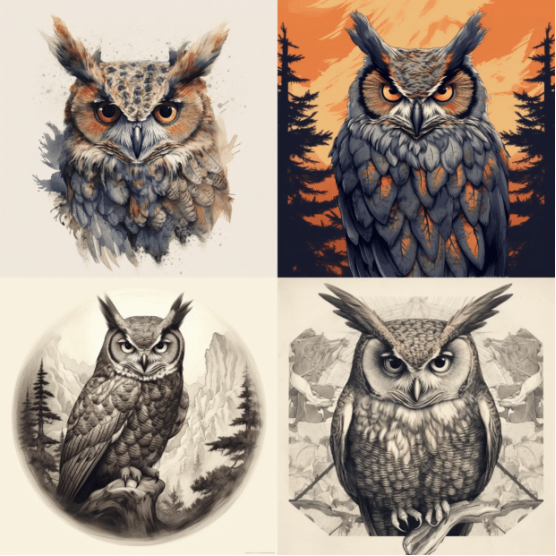
3. Add Relevant Details
Enhance your prompt by adding details related to the image elements. This can include colors, shapes, sizes, and textures.
Here's another example from Midjourney: “An illustration of a red owl with bright blue eyes.”
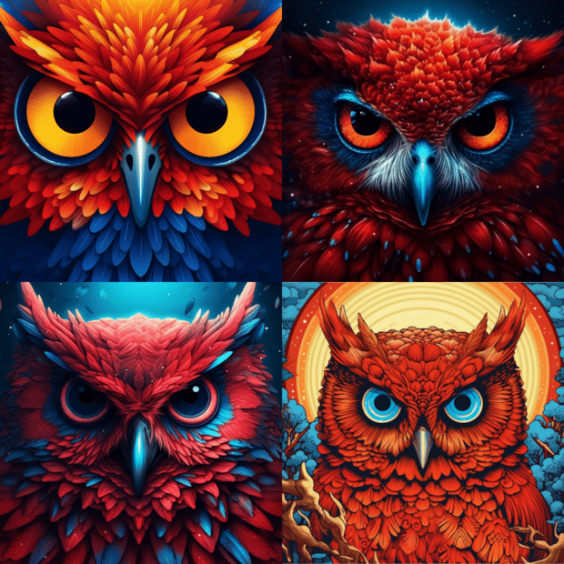
4. Describe Form and Style
Provide detailed information regarding the artistic style and form, especially if you're looking for a specific visual effect. You can include descriptive keywords such as "abstract," "minimalist," or "surrealist."
An example from Midjourney: “An illustration of a red owl with bright blue eyes in an abstract expressionist style.”
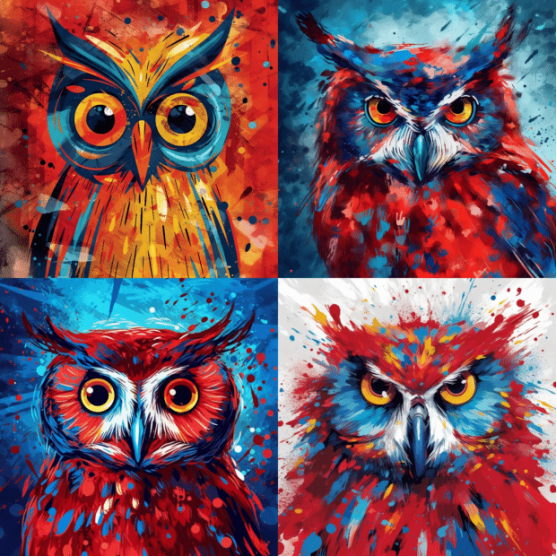
5. Define the Composition
Use keywords to define the composition of the image, including resolution, lighting style, aspect ratio, and camera angle. This way, you can more accurately convey your creative vision.
An example from Midjourney: “An illustration of a red owl in abstract expressionist style with volumetric lighting, featuring bright blue eyes.”
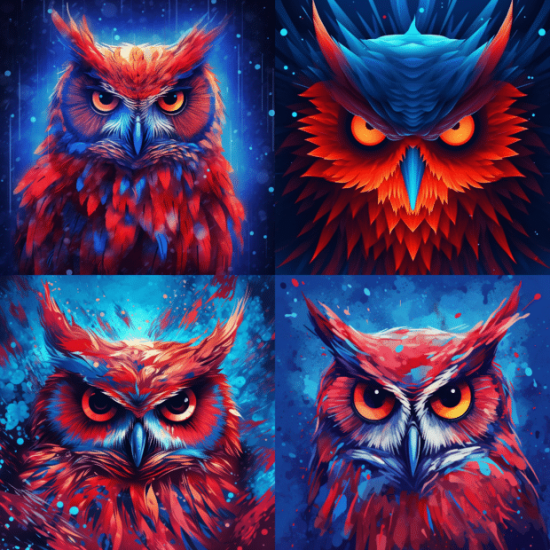
By examining these examples, you can see how each image evolves with the changing prompts.
Key Points for Successful AI Art Prompts
Ensure to include the following details to craft effective prompts: image format, theme, relevant details, style characteristics, and composition information. First, decide on the art type: is it photography, sketch, oil painting, or 3D rendering? Then, clarify the main subject, encompassing specific details such as color, shape, size, and texture to guide the AI to generate accurate artistic effects.
When describing the style, use keywords like “abstract,” “minimalist,” “expressionist,” or “surrealist” to convey the artistic traits you wish to exhibit. Finally, define the composition in as much detail as possible, indicating artistic genre, lighting style, proportions, and angles. The clearer your prompts, the more detailed and nuanced the resulting images will be.
Conclusion
Utilize XXAI tools to brainstorm and create prompts that can generate stunning images. Imagine inspiration is just at your fingertips; XXAI's art prompts and AI art generator tools will fully support you in developing exciting visual ideas. Input your thoughts and preferences now, and the AI model will recommend themes and concepts that match those requirements, helping you effortlessly craft perfect art prompts and embark on your AI art journey!